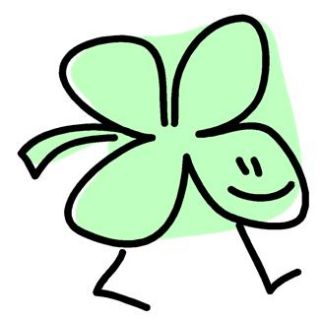
Perfectionism
The Eyes of the Tornado
How parental perfectionism reared its ugly head
Posted March 13, 2013

It starts early in parenthood. Those first few days of parenthood are all about cooing over how adorable your baby is and posting a thousand pictures on Facebook announcing your child’s presence in the world. But soon the pediatric visits begin and that’s when the competition begins. Your baby’s head size, weight, and length are measured and you are given percentages for your child’s measurements relative to other infants. I have seen many a parent (including myself) proudly display these numbers on their Facebook page like a badge of honor.
But I can also recall anxiety about this. What if my child fell into the dreaded 10th percentile on weight? Would that mean that I am a bad mother who is starving my kid? What would it mean about my decision to breast feed versus formula feed? What did it mean about my infant? The overachiever in me wanted my kid to be the best fed, healthiest, tallest, and heaviest infant on the block—the Andre the Giant of babies. I triumphed when a number was in the 80th percentile and despaired when my child was in the “average” range on any percentile. Who wants their child to be average?!
Then the attention turned to developmental milestones--crawling, walking, smiling, speaking, eating solid foods. Each developmental accomplishment brought absolute joy and excitement, but also worry if other kids are accomplishing these milestones at a different rate and what it might mean about your child or you as a parent.
Now that my kid is a toddler, the focus is on learning. When she sings the alphabet I beam with pride. When she counts to 20 (skipping only a few numbers along the way) I rejoice. Each accomplishment is an indication of her growth and intelligence—her extraordinariness as a toddler.

So when she began doing art projects at daycare I was ecstatic. Look at how well my kid can use safety scissors! Check out her grip on that crayon! Her use of stickers on this page is simply astounding.
This year has been the year of the glue. To increase fine motor skills, the kids are gluing stuff onto paper—ornaments on a Christmas tree shape, stars on a piece of paper, or googly eyes, a mouth, arms and legs on the body of an animal. It has been a productive artistic year and we proudly display the art on our fridge like any good parent.
For Thanksgiving we had a turkey with its beak coming out of its rear, one googly eye on its foot and another one floating in the background of the picture. For Christmas we had a Santa with an arm coming out of his face, another one extending from his belly, his mouth on upside-down and on his foot, and both of his eyes floating in the background. Each feat of artistic skill was more abstract than the previous and with the body parts seemingly thrown on the picture at will with little regard to where they belong.
With each piece of art that was sent home, I looked for growth. Were the mouth and the eyes at least on the face of the animal or floating in the background? Were the two eyes located anywhere near one another or did the animal literally have an eye in the back of his head? Then I found myself looking at her art in comparison to that of other kids in her room and wondering why it was that her projects never had the parts in the “right” places even if other kids of her age had mastered that. Did this mean that she was creative or behind her classmates? I found the perfectionist and overachiever in me rearing its ugly head. I tried to focus on the other areas of her growth, while still hoping for the day when she would bring home an animal that didn’t have a leg growing out of its abdomen.

A few days ago she and her classmates made tornadoes and put eyes and a mouth on them. I looked at her project and saw that the eyes were parallel with one another and horizontal and the mouth was appropriately placed under them. She had even managed to put the mouth in a frowny face to indicate that it was not a nice tornado. The day that I had been waiting for had finally come! She had made the perfect tornado with a perfect mean tornado face.
I expected to feel pride and joy in her the perfection of her creation but instead my heart fell. This perfect tornado was perfectly ordinary. It didn’t reflect my daughter’s reckless abandon in glueing—the way that she will grab stickers and googly eyes and slap them down on a paper one after another without a care in the world. It didn’t have her wild and impulsive flair. It didn’t reflect the characteristics that I love so much about her—her absolute joy in life and fierce independence.
I could imagine her carefully placing the eyes on the tornado and making them parallel. I could see her working hard to place the mouth in the “right” place as I would have done as a kid. I could see the project becoming about the accomplishment, not the joy of doing the project and I could see my own perfectionism growing in my kid.
I looked into the perfectly placed eyes of the tornado and saw the imperfections in the perfection that I had always sought out. And I realized I don’t want my kid to shoot for perfect. I don’t want her to spend her life chasing the top percentiles in everything. Aiming for perfection (or even achieving it) never made anyone happy.
I want the eyes of her tornado to be joyously scattered on the page with little care as to where they “should” be or how it “should” look. I wanted an arm shooting out of the tornado’s butt just because it could and the mouth floating off in space somewhere. I wanted her joyous nature to be reflected on the page, not her desire for things to be “right” or accurate.

Her imperfect artwork was actually more perfect to me because it reflected what I want for my kid--delight in what she was doing and little care for doing it perfectly or according to someone’s expectations. I want her to enjoy learning because it is fun, not because she wants an A+ on an assignment. This does not mean that I want her to be a slacker or someone with no ambition. I want her to achieve, but the accomplishments will come if the joy is there.
I have that perfect tornado prominently displayed on the fridge right next to all of her more abstract art. The tornado is not there as an indication of my daughter’s feat of artistic abilities or the perfection in her creation, but as a reminder to myself to encourage her to seek joy and happiness, not perfection. I eagerly await her next creation—maybe a four leaf clover for St Patty’s day, hopefully with a hand blissfully sprouting from its head and a googly eye staring up at me happily from its foot.
For more on perfectionism, see Imperfectly Happy
For more on handing child stress and anxiety, see 12 Tips to Reduce Your Child's Stress and Anxiety.

Copyright Amy Przeworski.
Follow me on Twitter @AmyPrzeworski https://twitter.com/AmyPrzeworski
Like my Facebook page: https://www.facebook.com/DrAmyP
Follow me on Pinterest: http://pinterest.com/amyp100/
Subscribe to receive emails about new blog posts: http://feeds.feedburner.com/Don039tWorryMom



